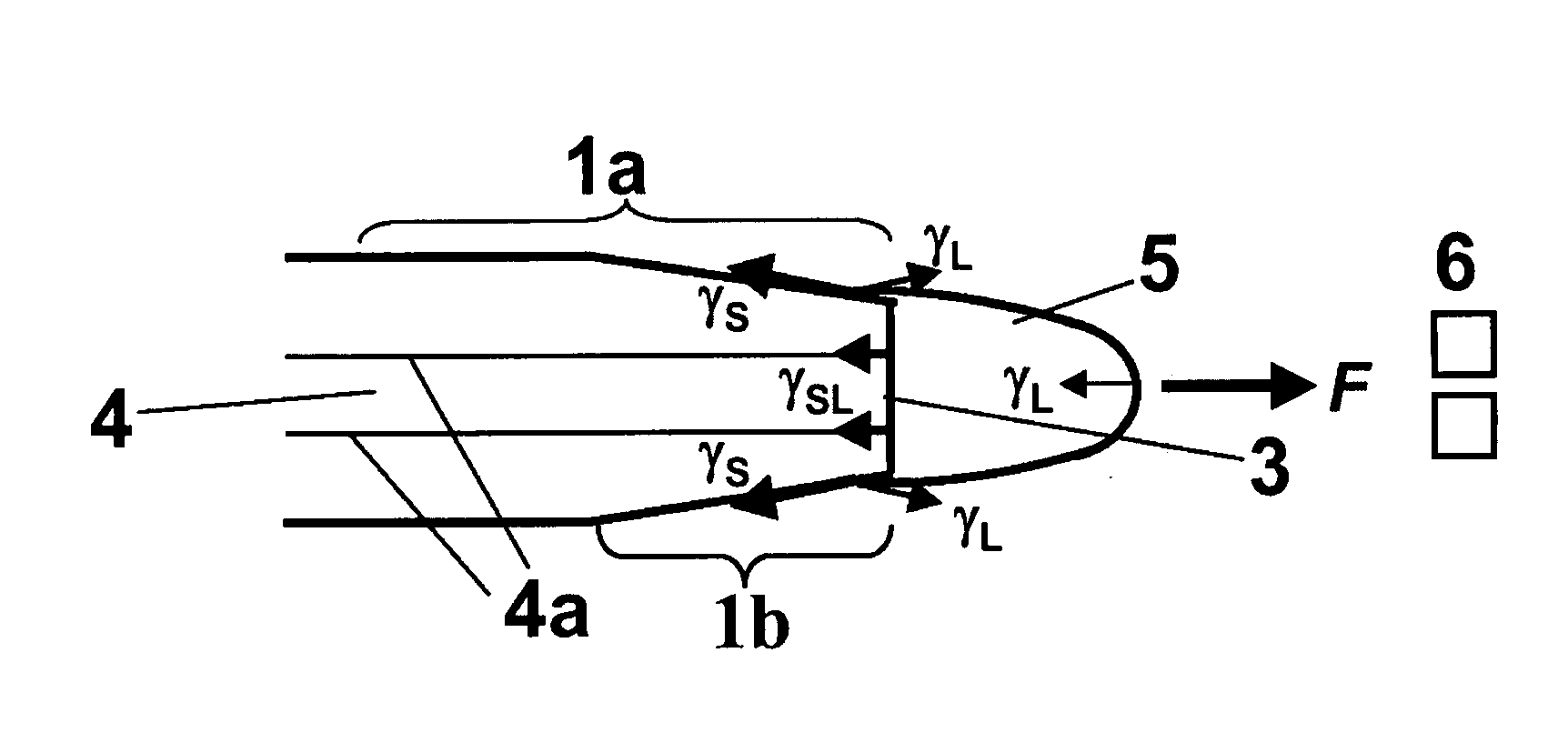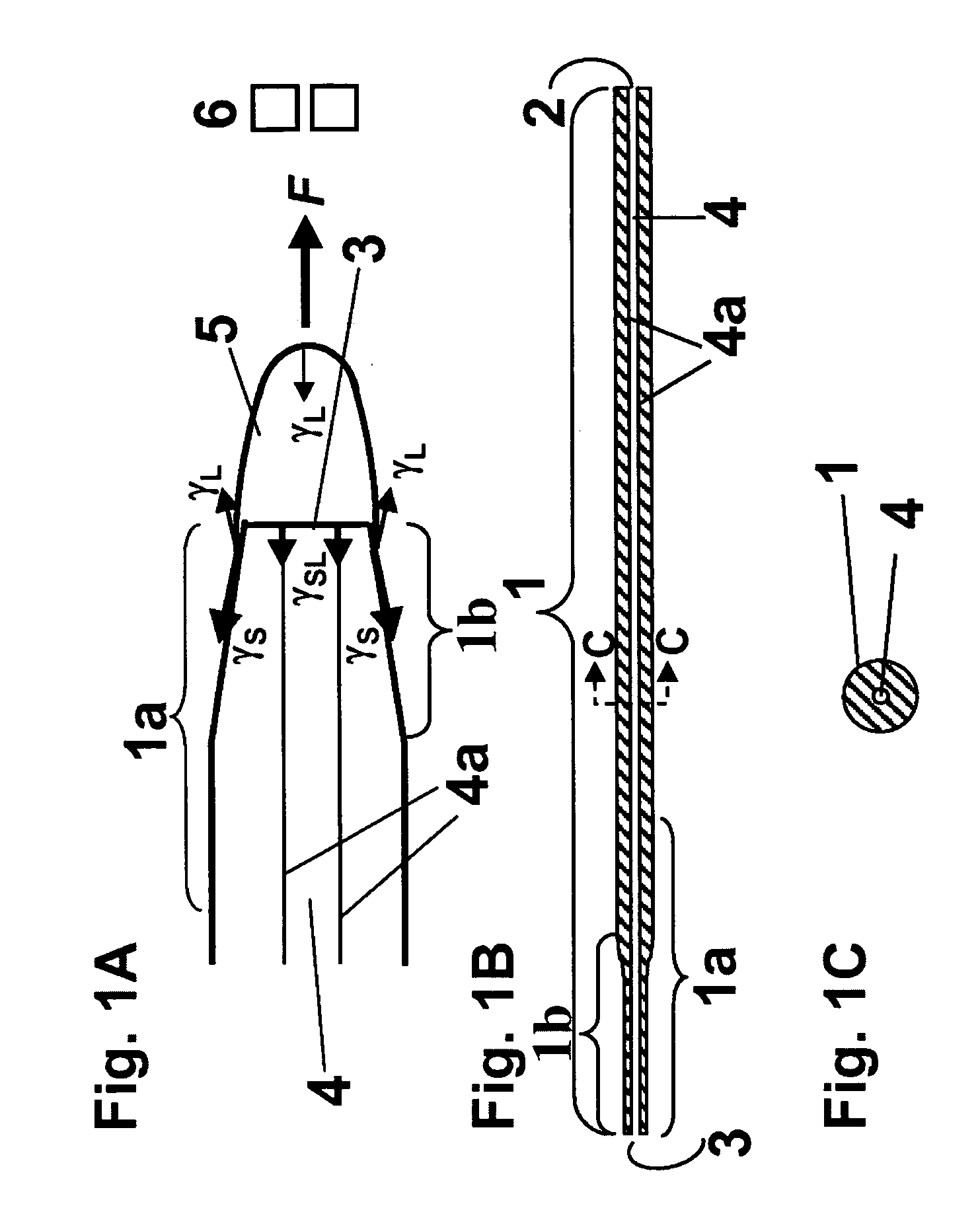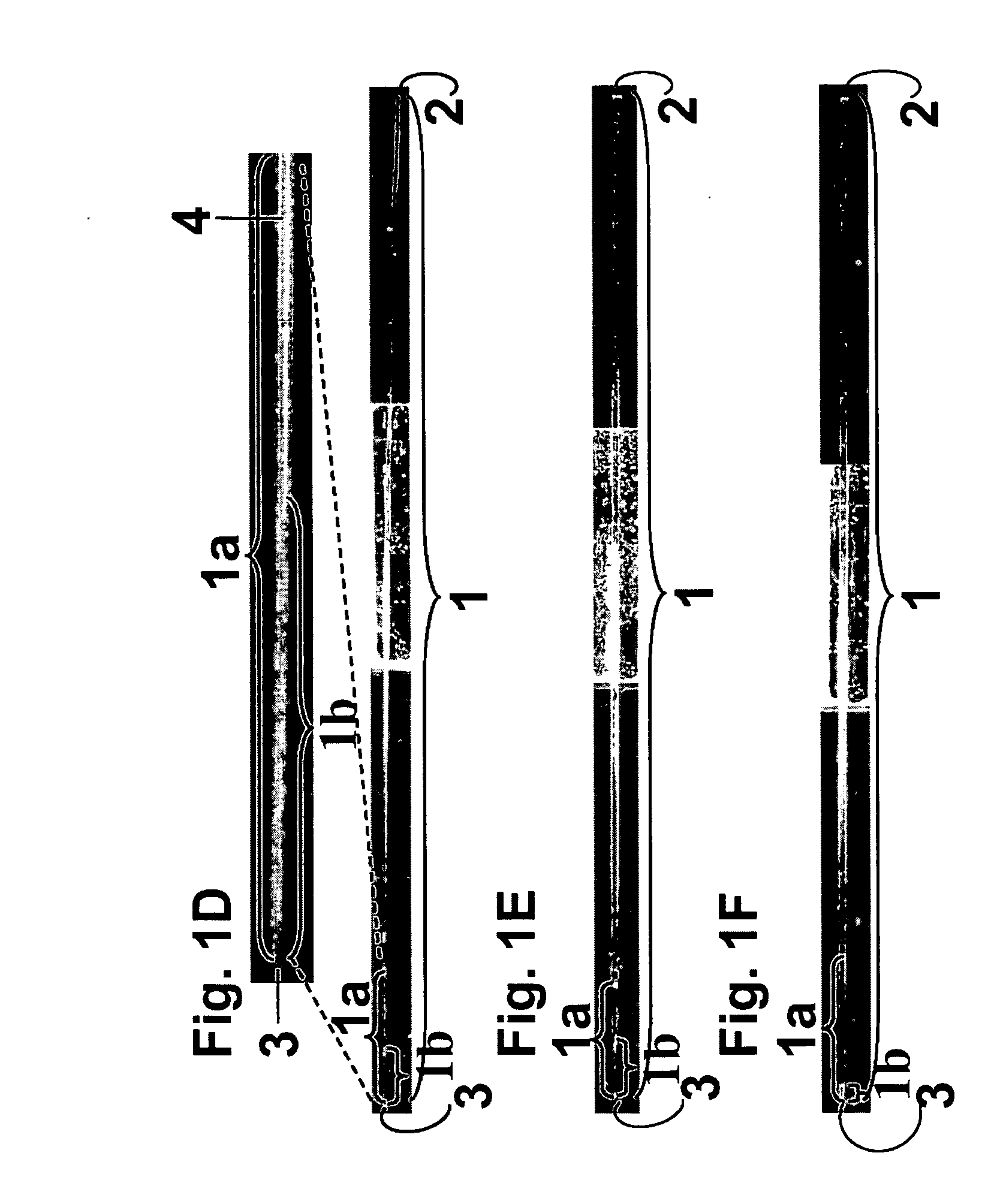Electrospray emitter coated with material of low surface energy
a technology of surface energy and emitter, which is applied in the direction of particle separator tube details, instruments, separation processes, etc., can solve the problems of high surface tension, high surface tension, and difficulty in spraying aqueous solutions, and achieve the effect of low surface energy
- Summary
- Abstract
- Description
- Claims
- Application Information
AI Technical Summary
Benefits of technology
Problems solved by technology
Method used
Image
Examples
example 1
Preparation of Capillaries with the Internal Surface Coated with PFPO
[0058] Fused-silica capillaries with a polyimide coating are now a standard tubing system for capillary HPLC, and it is well known that their inner surface has a capacity for binding charged and / or hydrophobic analytes, leading to a significant loss during their delivery in an HPLC tubing system. To prevent those sample losses, the internal surface of fused-silica capillaries was coated with PFPO. An appropriate concentration of PFPO (0.1-0.001%, more preferably 0.005-0.02%) was pumped through a capillary. It was flushed by a nitrogen flow, and incubated for 60 min at 60° C. and then overnight at 40° C.
example 2
Performance of the Emitter Tips with Water-Rich Solvent
[0059] At the initial stage of gradient elution on reverse-phase HPLC being frequently used for high-throughput proteomics and metabolomics, emitters must electrospray water-rich solution, e.g., 2% acetonitrile and 0.1% formate in water, in the stable cone-jet mode (Cloupeau, M.; Prunet-Foch, B., J. Electrostat. 1989, 22, 135-159.) immediately after a high voltage is applied. To test whether the emitters of this invention meet this requirement, their efficiency of spraying distilled water was examined using an etched, PFPO-coated emitter with no internal taper at the tip by visual inspection and stability of total ion current (TIC) with an ion-trap mass spectrometer LCQ (ThermoFinnigan, Calif.). In this and subsequent examples, LCQ was used for testing performance of the emitters because of its good connectivity for HPLC, but they can be used with any type of mass spectrometers; fine-tuning of the experimental parameters includ...
example 3
Capability of the Emitter for Negative ion MS
[0064] There is an increased risk of corona discharge or arcing in the negative ion mode versus in the positive ion mode (Ceck, N. B.; Enke, C. G., Mass Spectrom. Rev. 2001, 20, 362-387). In particular, conventional metal-coated emitters are prone to experience corona discharge that damages a coated tip. This prevents a stable spraying of negative ions, thereby hindering their coupling to HPLC or other separation methods that require a stable operation of ESI for a longer time period. Very recently, nanoelectrospray emitters coated with polyaniline, a conductive polymer, was reportedly resistant to electrical discharge and durable for at least an hour in the negative ion mode (P. Bigwarfe, et al., Rapid Commun. Mass Spectrom. 2002, 16, 2266-2272). The tips of PFPO-coated emitters are electrically non-conductive. This virtually eliminates electrical discharge and allows stable electrospray in the negative ion mode as well as in the positi...
PUM
 Login to View More
Login to View More Abstract
Description
Claims
Application Information
 Login to View More
Login to View More - R&D
- Intellectual Property
- Life Sciences
- Materials
- Tech Scout
- Unparalleled Data Quality
- Higher Quality Content
- 60% Fewer Hallucinations
Browse by: Latest US Patents, China's latest patents, Technical Efficacy Thesaurus, Application Domain, Technology Topic, Popular Technical Reports.
© 2025 PatSnap. All rights reserved.Legal|Privacy policy|Modern Slavery Act Transparency Statement|Sitemap|About US| Contact US: help@patsnap.com



